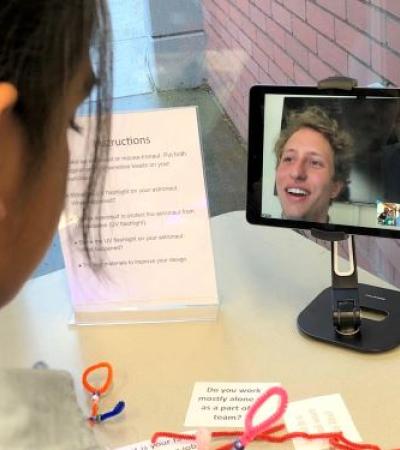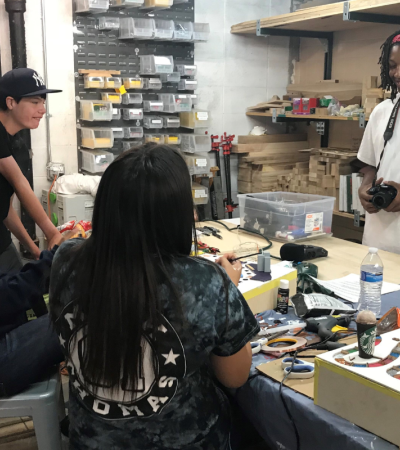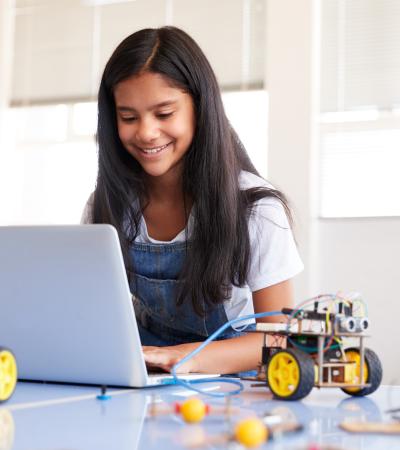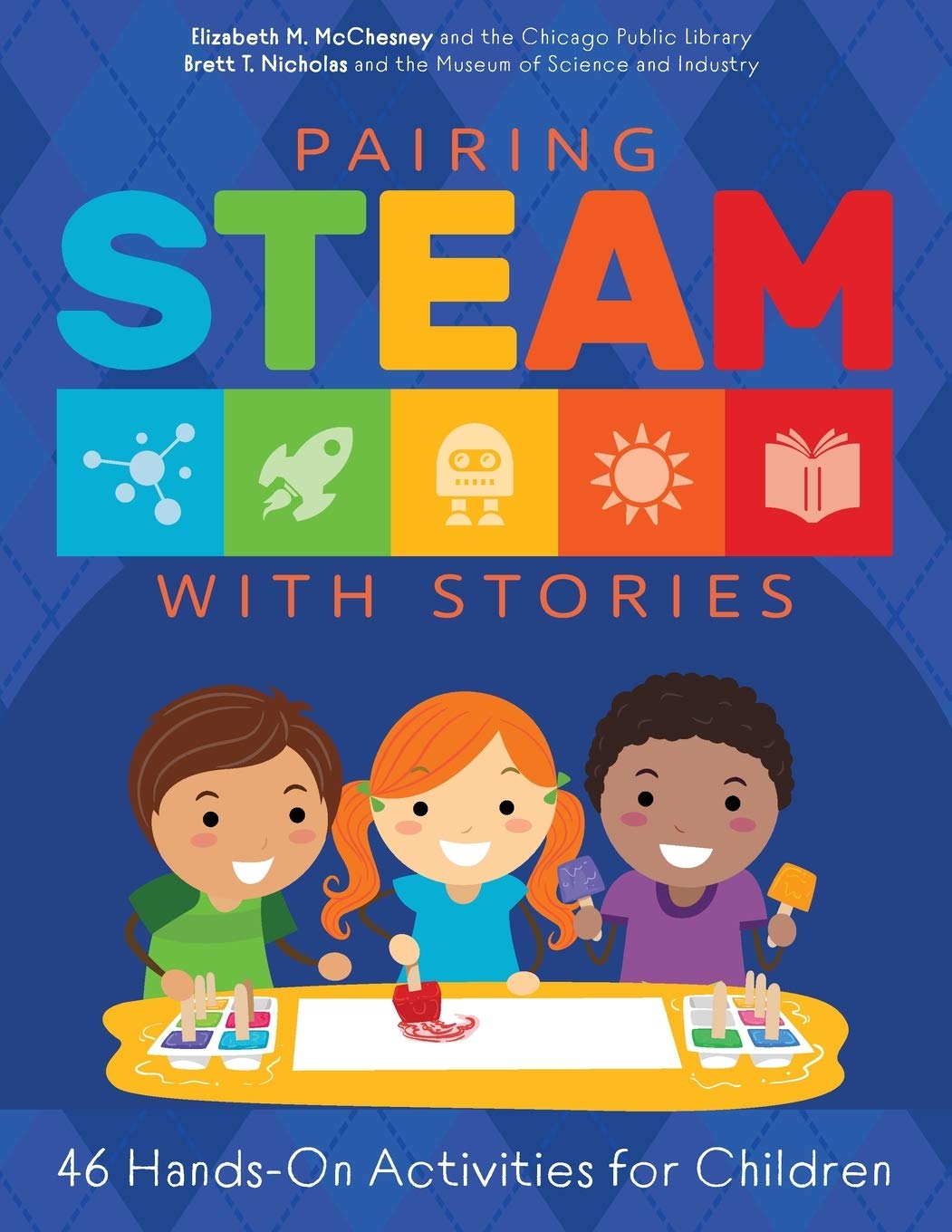 The Institute for Museum and Library Services (IMLS) considered these skills and aligned them with library and museum priorities. Some include Learning and Innovation Skills (e.g., critical thinking and problem-solving), Information, Media and Technology Skills (e.g., information literacy) and Life and Career Skills (e.g., social and cross-cultural skills).
The Institute for Museum and Library Services (IMLS) considered these skills and aligned them with library and museum priorities. Some include Learning and Innovation Skills (e.g., critical thinking and problem-solving), Information, Media and Technology Skills (e.g., information literacy) and Life and Career Skills (e.g., social and cross-cultural skills).
IMLS also suggests that the 21st century has changed our thinking about how and when we learn, blurring the line between school and out-of-school learning experiences. IMLS quoted Dr. Dennie Palmer Wolf, a leading researcher in out-of-school time learning, who said: "Goal-directed free-time activity in safe and supportive environments with responsive adults and peers makes sizable contributions to learning, social skills, and mental health" (IMLS 2009, II).
From this, public libraries can extrapolate that our programs and services, when aligned with youth interests, contribute to the overall learning and development of the child.
ALA Editions book "Pairing STEAM with Stories: 46 Hands-on Activities for Children" picks up on substantive work done in a former partnership between the Chicago Public Library and the Museum of Science of Industry, which can also be read about in a previous ALA Editions book, "Summer Matters: Making All Learning Count." This work embedded STEM and STEAM learning as essential to building critical, IMLS-led 21st-century skills.
Most libraries have adapted STEM learning in their program offerings. This book dives into ways to build empathy and other whole child skills when picture books are married to a STEAM activity.
Promoting Whole Child Skills
As the authors of "Pairing STEAM with Stories," we believe that pairing STEM activities with books offers a rich, interdisciplinary approach to fostering whole-child skills, including higher-order empathy skills. The picture books serve as an engagement hook, an entry point into exploring connected social-emotional learning and STEM themes. To nurture curiosity and confidence, follow the children’s lead.
These are open-ended activities that provide plentiful opportunities for creative approaches to problem-solving. The goal is not to get to the correct answer. The goal is to create positive learning environments. Engagement, curiosity and honoring the ideas of our young learning partners, when mixed with a little bit of fun, leads to playful learning and programs that will keep kids coming back for more.
1. Perspective-Taking through Story-Based Problem Solving
How: Pair a story with characters facing challenges (e.g., a billy goat escaping the evil troll) with a STEM activity (design a catapult or a boat) where children create and test their designs.
Skill: Kids step into the character's shoes (or hooves!), considering their emotions and needs as they design, test and build solutions. This builds empathy by encouraging them to think about others' experiences and find ways to help the characters.
2. Collaboration and Teamwork
How: Use books with themes of friendship or teamwork (e.g., "Rosie Revere, Engineer") alongside STEM tasks that require cooperative problem-solving. For instance, children could work together to build a machine to "help" the story's characters.
Skill: STEM activities help children practice listening, sharing ideas, and supporting their peers. They foster social awareness and relationship skills and help develop teamwork.
3. Resilience through Iterative Learning
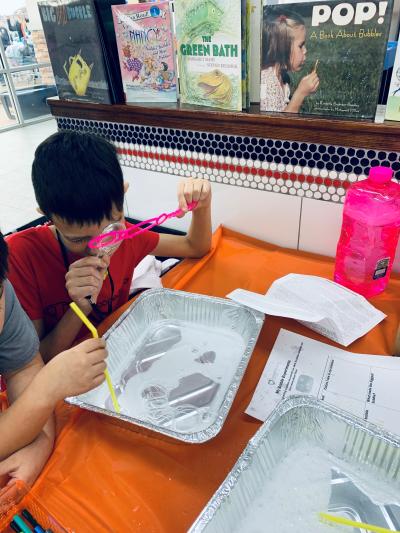
How: Connect a story about perseverance (e.g., "The Little Engine that Could") to STEM challenges like how to scale an inclined plane.
Skill: Children learn to manage frustration, practice self-regulation and embrace a growth mindset by witnessing characters overcome setbacks and mirroring that process in their STEM work.
4. Emotional Connection via Story Contexts
How: Choose books or stories with strong emotional narratives (e.g., "Library Lion") and align them with STEM activities like experimenting with sound chambers or how sound travels.
Skill: By relating to characters' emotions, children develop self-awareness and empathy, understanding how their STEM creations might impact others emotionally or practically.
5. Ethical Decision-Making with Real-World Relevance
How: Use books that introduce environmental or social issues (e.g., "The Boy Who Harnessed the Wind") and follow up with STEM projects, such as designing eco-friendly solutions.
Skill: Children reflect on the broader implications of their creations, considering how their solutions might help or affect others, building responsible decision-making and ethical engagement.
Connecting to Science of Reading
Additionally, pairing stories and/or books with STEM activities is vital for public library professionals to contribute to the Science of Reading. The Scarborough Reading Rope demonstrates how language comprehension is critical to growing a successful reader and second language learners.
STEM and stories together enhance background knowledge and vocabulary: both vital parts of the language comprehension strand of the ‘reading rope.’ A STEM activity helps build working vocabulary and a book re-enforces concepts, knowledge and vocabulary: a language win for all!
A Co-Creation Call To Action
"Pairing STEAM and Stories" was published in 2020 at the height of the COVID-19 pandemic and represents our pre-pandemic work. What do you see your library kids and their families need now? What skills have risen as the most critical to your communities? How do you see pairing STEAM and Stories as an approach that you can also use to address the reading crisis our kids face?
We'd love to hear from you and to design culturally competent, healing, empathy engineering, and STEAM experiences with the kids and families you serve. To add input, please email nicholasb@glsc.org or lmcchesney@summerlearning.org. Let’s design new experiences together!
For more, purchase "Pairing STEAM with Stories: 46 Hands-on Activities for Children" from the ALA Store.

